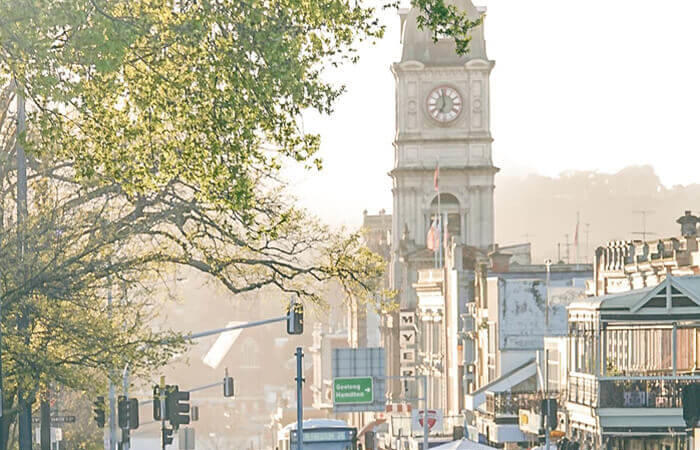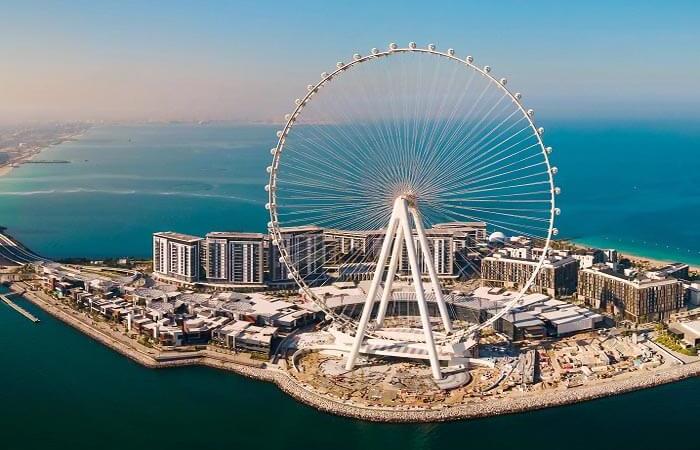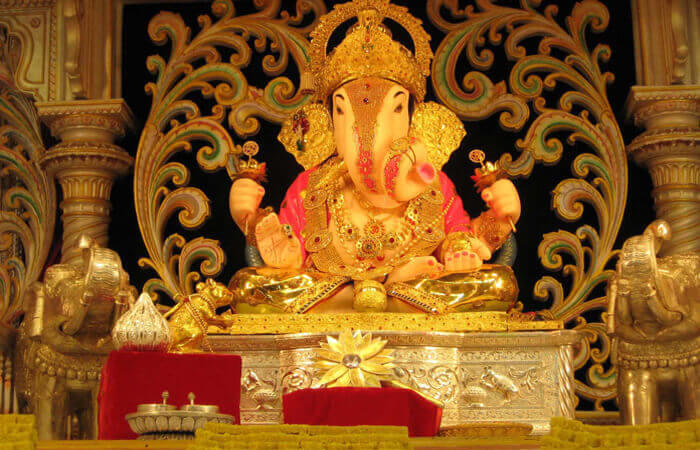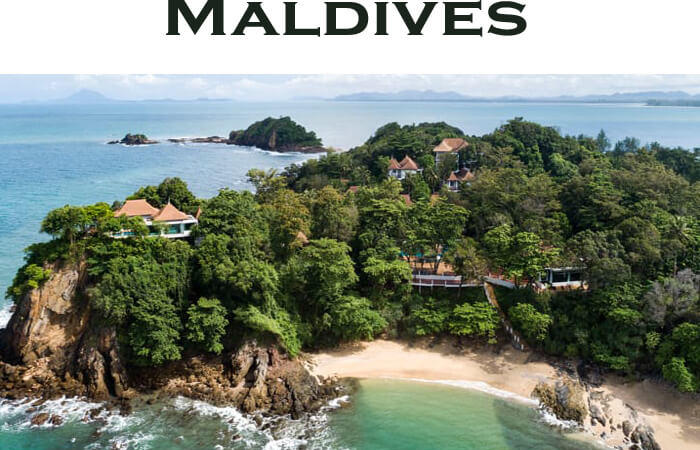Vrindavan – Top 10 temples to visit
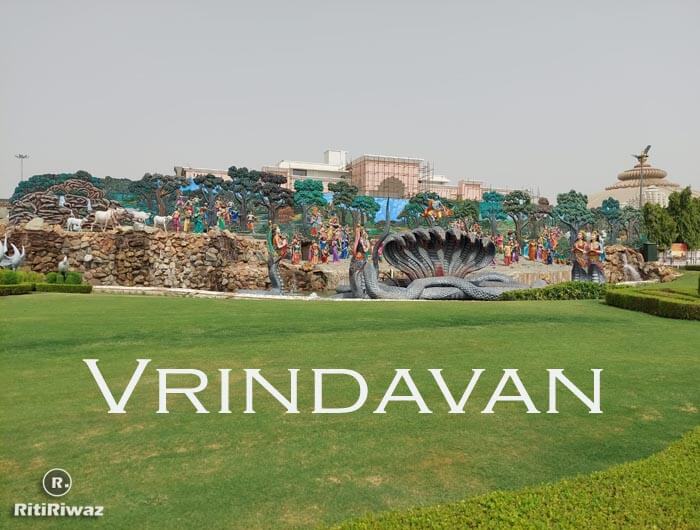
Vrindavan also spelled as Brindaban is the place where Lord Krishna enjoys his childhood. It is a holy town situated on the banks of the Yamuna River in the Mathura district of Uttar Pradesh. The word Vrindavan means forest of Basil as Vrinda = Basil and Van = forest. It is one of the major pilgrimage centers for Hindus, and one of the oldest cities in the country.
Entire Vrindavan is full of holy places and temples, thus along with the Prem Mandir, you must plan to visit other temples as well. The Govindaji and Ranganatha temples are in the eastern part of town. In the middle of the downtown area is Loi Bazaar, the main shopping bazaar to get devotional items and clothing. A few well-known are Shri Banke Bihari Temple, RangNath Temple, Jaipur Temple, ISCON Krishan-Balram Temple, Radha Vallabh, Vrindavan Bihari, Sewa Kunj, Nidhi Van, etc.
Also, you can plan to visit Sapt devalayas or Seven holy places which are established by followers of Chaitanya Mahaprabhu, these seven temples are Govind Dev Temple, Radha Gopinath Temple, Madan Mohan Temple, Radha Raman Temple, Radha Damodar Temple, Radha ShyamSundra Temple, and Gokulanand Temple.
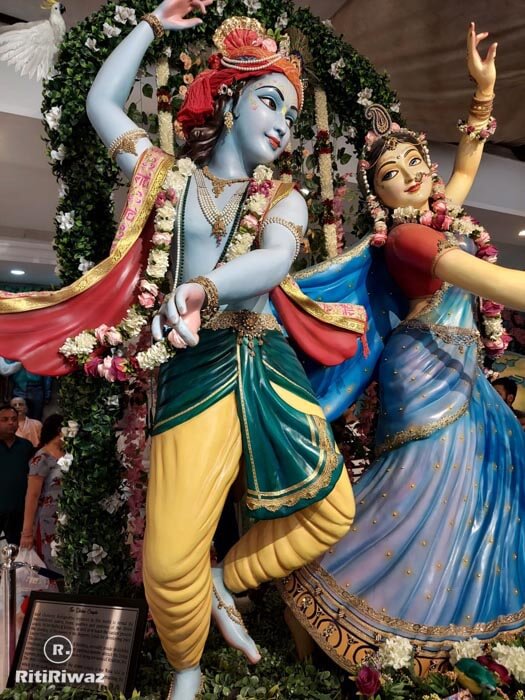
Some know Vrindavan as a place to visit famous temples dedicated to the worship of Radha and Krishna, such as Prem Mandir which is a 54-acre temple complex over 12 years by at least 1000 highly skilled artisans; Krishna Balaram or ISKCON temple, where temple decorations and foods offered to the deities are known far and wide for their quality and beauty; or Banke Bihari temple, where the Krishna deity is known to have brought about innumerable miracles.
The beautiful Yamuna, India’s most sacred river flows through the transcendental land of Vrindavana. A bath in this river is said to be one hundred times more purifying than a bath in the Ganges. The reason is that even though the Ganges was once touched by the feet of Lord Vishnu, it was the Yamuna where Lord Krishna Himself played and swam with his cowherd boyfriends. Starting from high up in the Himalayan mountains at Yamunotri, the river Yamuna slowly makes its way to the plains of India until it reaches Sri Vrindavana dhama.
Prem Mandir, Vrindavan
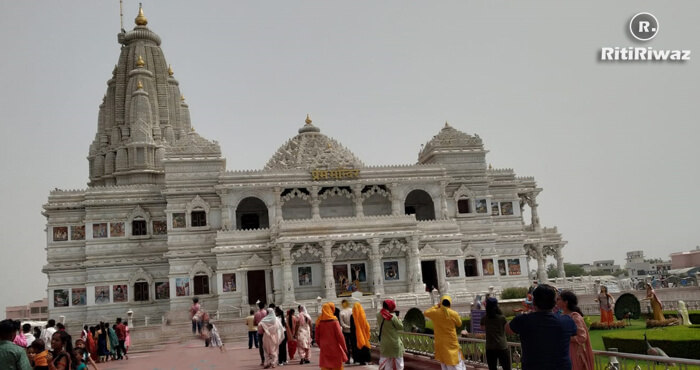

The Prem Mandir, Temple of God’s Love is one of the most famous Hindu temples located on the outskirt of Vrindavan in Mathura district, Uttar Pradesh. There are beautiful tableaux and carved walls on the temple premises which depict the part times of Lord Shri Krishna. The conquest of Kalia Nag, Raas Leela with gopis, and the raising of the Govardhan mountain on his finger are beautifully carved as if they will come alive in a short time.
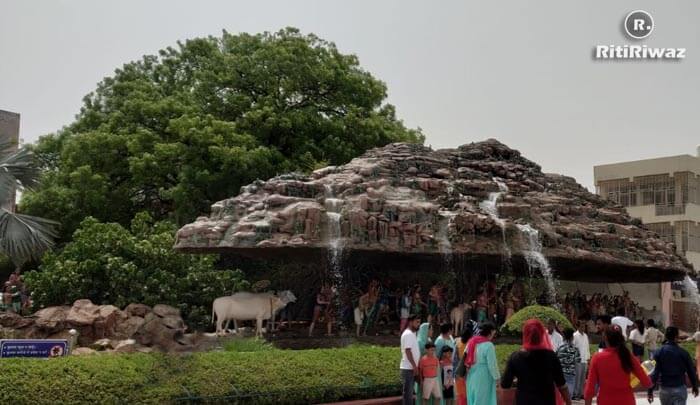
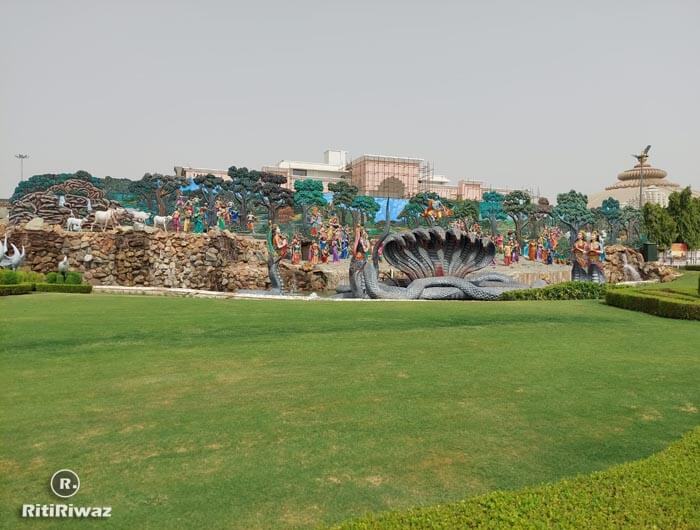
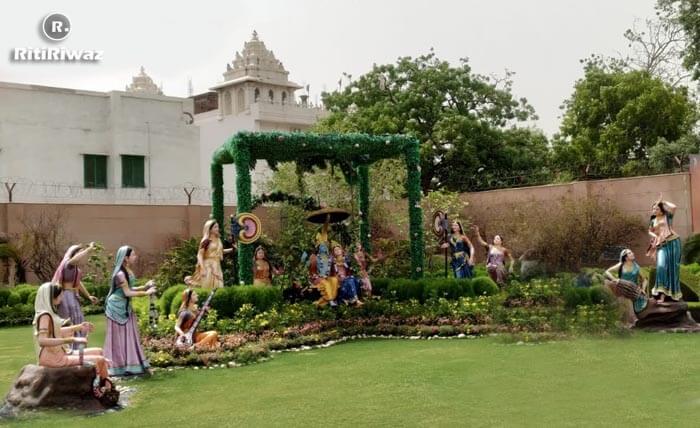
There is a temple of Shri Krishna Radha Rani on the bottom floor of the temple and one temple of Sita Ram on the first floor. There is also a statue of Kripalu Ji Maharaj who constructed the temple.
Iskcon Temple (Shri Krishna Balram Mandir), Vrindavan
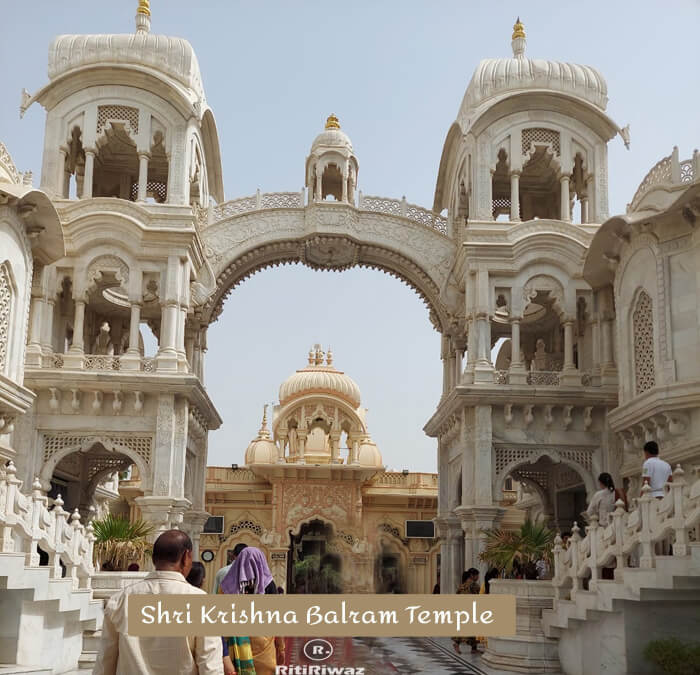
Sri Krishna-Balarama Temple was built by the International Society for Krishna Consciousness (ISKCON) in Raman-Reti, about a 15-minute bicycle-rickshaw ride from the main downtown area. The road in front of the Hare Krishna temple is called Bhaktivedanta Swami Road. It is also referred to by its old name, Chatikara Road.
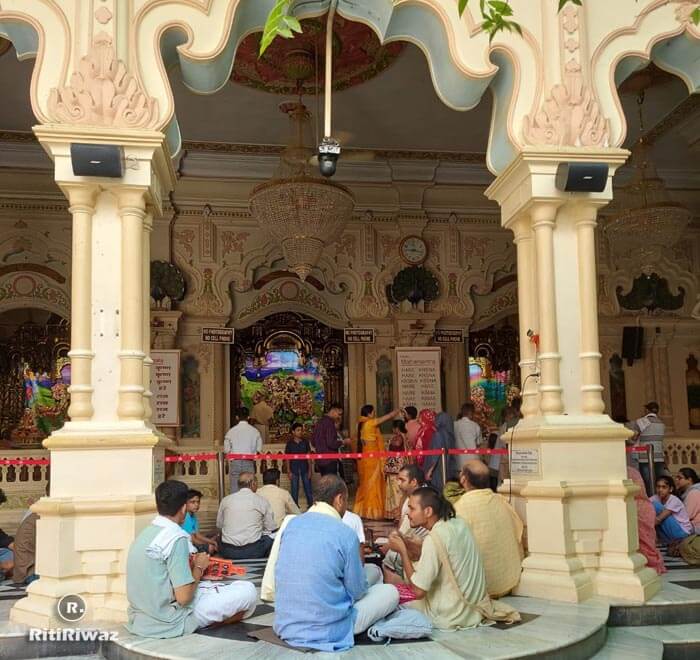
This beautiful temple has the Deities of Gaura-Nitai (left altar), Krishna Balarama (middle altar), and Radha-Shyamasundara (Radha-Krishna on the right altar). In front of the temple is the Samadhi Mandir of His Divine Grace AC Bhaktivedanta Swami Prabhupada, the Founder-Acharya of the International Society for Krishna Consciousness.
Shri Bankey Bihari Ji Temple, Vrindavan
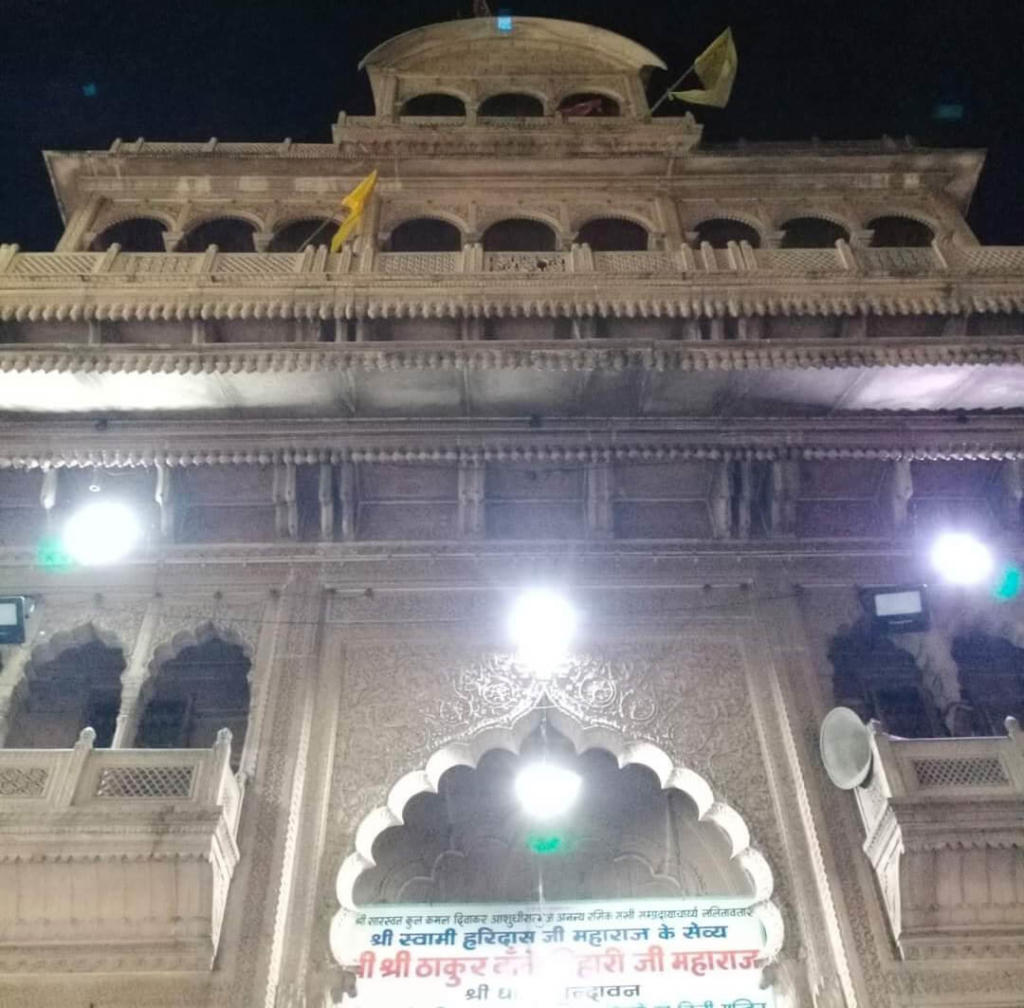
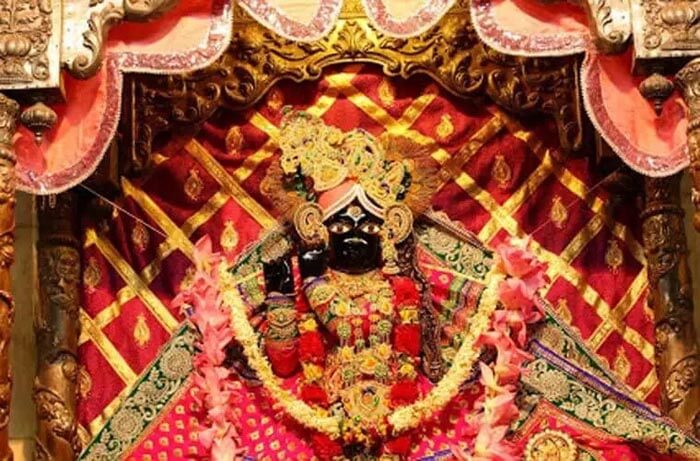
Shri Bankey Bihari Ji Temple (1864) was established by Haridas Swami, a contemporary of the six Goswamis. This is the most popular temple in Vrindavan, especially in the month of Sravana, during Jhulan Yatra. It is an interesting temple to visit. The curtain before the Deities is not left open like at other temples. Every few minutes the curtain is pulled shut and then opened again. This shrine is considered among the 7 temples of Thakur of Vrindavan. The image of Krishna Ji is standing in the Tribhanga posture in this temple.
Shri Rangnath Ji temple, Vrindavan
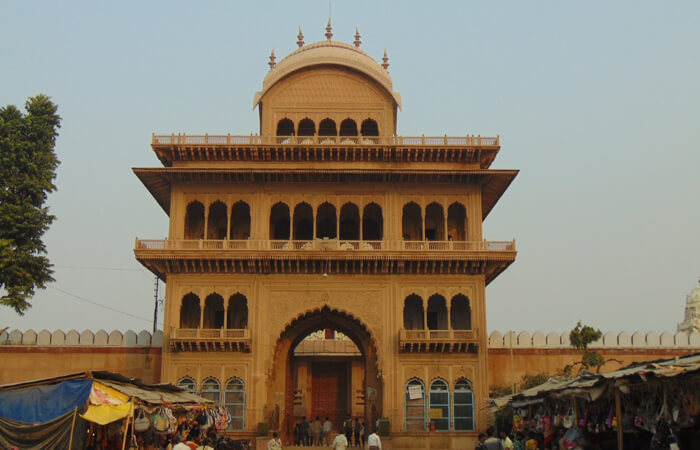
The largest temple in Vrindavan, Shri Rangnath Ji Mandir has a Dravidian style of architecture built in the year 1851. This temple is dedicated to Lord Ranganatha who depicts Lord Vishnu and inside, you can see the holiness in his Sheshashayee Pose resting around the Sesha Naga. Besides this, there are also other deities who you can worship are of Lord Rama, Lord Lakshman, and Goddess Sita along with Lord Narasimha, Lord Venugopala, and Lord Ramanujacharya in this sacred shrine in Vrindavan. Along with a Dravidian style, a rare mixture of South and North classical styles of architecture can also be witnessed.
Vaishno Devi Temple, Vrindavan
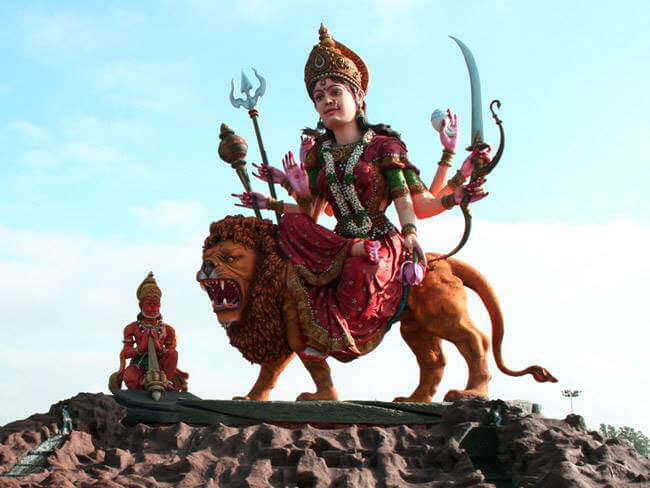
Vaishno Devi Temple in Vrindavan is built on 11 acres of land and has a huge and beautiful image of Goddess Durga sitting on a Lion which attracts the pilgrims to the temple. The temple premise has many facilities for the pleasure of devotees. There is a yoga center and a big meditation hall along with dharmshalas and a library.
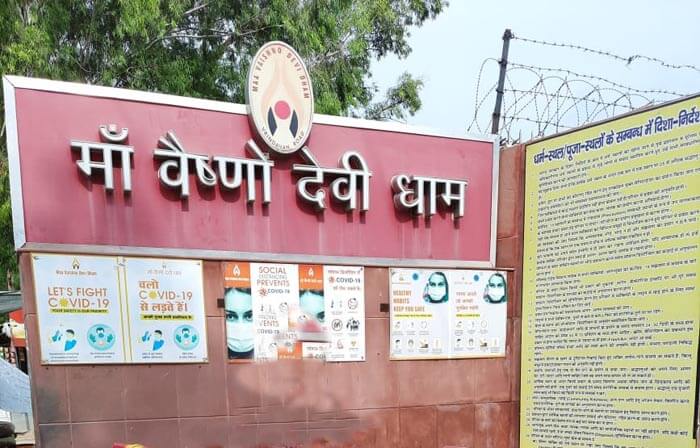
Vaishno Devi Mandir is located in the Katra district in Jammu. Every year thousands of pilgrims from different parts come to this Vaishno Devi temple to have the blessings of Maa Vaishno. But due to certain reasons, few people are unable to get the opportunity to visit the shrine. Keeping this in mind Sh. J.C. Chaudhary, managing trustee of Jay Kay trust decided to erect a shrine commemorating Maa Vaishno Devi in the divine land of Vrindavan.
Radha Raman Mandir, Vrindavan
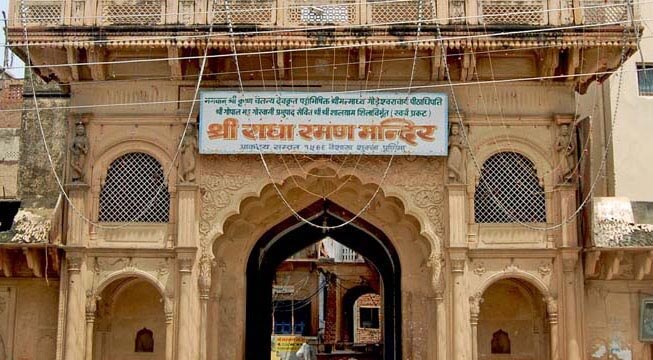
Constructed in 1542 at the request of Gopala Bhatta Goswami in the sixteenth century, the Radha Raman temple is one of the most exquisitely crafted and revered temples of Vrindavan. ”Radha Ramana” means “one who gives pleasure to Radha”, and Radha Ramana is one of the few original deities still left in Vrindavan. The self-manifested deity came out of the Saligram Shila.
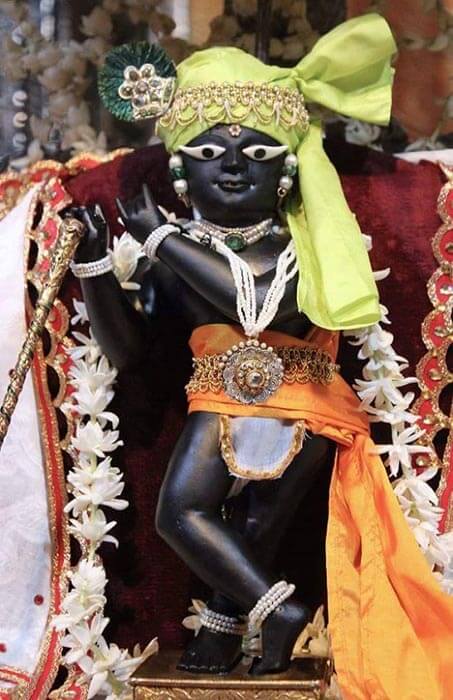
Once Gopal Bhatta visited Nepal and dipped in the Kali-Gandaki River. There he found 12 Shilpgram Shila and brought them to Vrindavan. Gopal Bhatta used to worship all the Shilpgram Shila but one day after returning from the Yamuna River and taking bath he found that there are only 11 Shilpgram Shila with the beautiful three-fold bending form of tri-bhangananda Sri Krishna playing flute among them. Thus the deity of the Radha Raman was created from the Shilpgram Shila. Gopal Bhatta Goswamis Samadhi is to one side after you enter the main door from the road into the sanctuary compound.
Radha Damodar Mandir
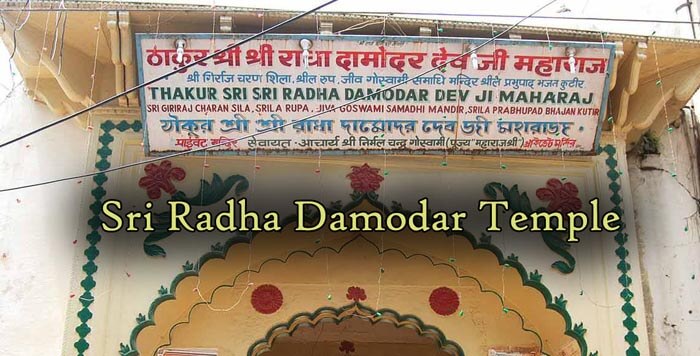
Shri Radha Damodar temple is situated within the area of Sevakunj in Vrindavan. Shri Rupa Goswami used to live here in his bhajana-kuti. The presiding deities of Shri Radha Damodar were manifested by Shri Rupa Goswami who later gave them to his dear disciple and nephew, Shri Jiva Goswami for service and worship. Srila Jiva Goswami in the year 1542 AD established the temple. Later during the attack of Aurangzeb on Vrindavan, the idols of Radha Damodar were shifted to Jaipur for some time and were brought back to Vrindavan in 1739 AD.
Radha Vallabh Mandir
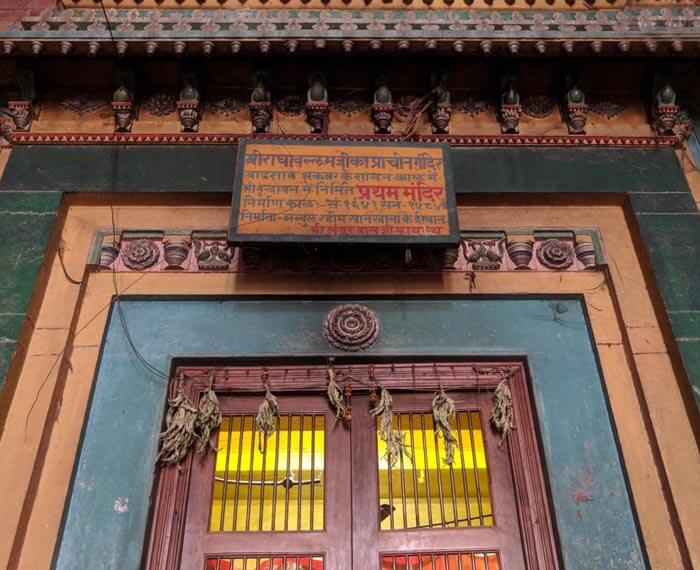
Radha Vallabh Mandir is one of the seven temples in Thakur of Vrindavan. The Radha Vallabh Mandir is situated near Gotam Nagar on the cliff near Bankey Bihari temple. This temple is the epitome of the sacred and divine love of Radha and Krishna, displayed in the rarest form ‘Ras-bhakti’. The central deity of the temple is Krishna who is worshiped under the name of Shri Radha Vallabh which means the consort of Radha. Alongside Krishna, a crown is placed which signifies the presence of the goddess Radha.
Nidhi Van
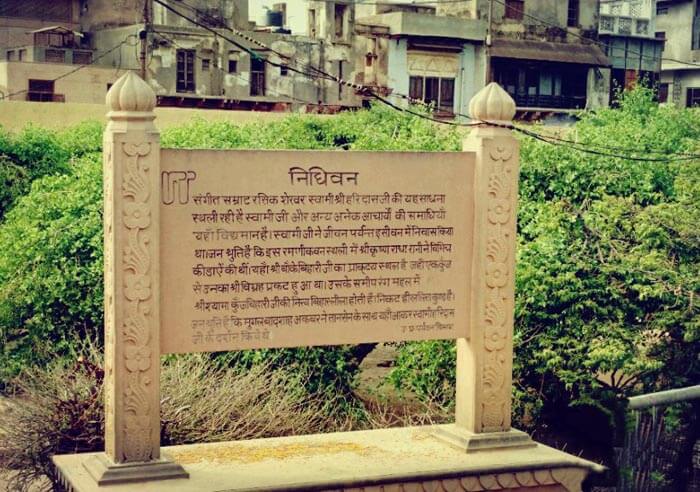
NidhiVan is a sacred temple of Bankey Bihari in Vrindavan. The major part of the temple is surrounded by huge busy forests. The Temple derives its name from Nidhi meaning Treasure and Van meaning forest. Everywhere greenery and twisted trees.
The devotees and locals believe that not only Lord Krishna visits this place but he also conducts his Rasleela every single night here! And this is the reason why after the evening Aarti at 7 pm in the temples, the doors of Nidhivan shut down for the devotees as well as priests. Not only this, the birds and animals also leave this place in the evening. Nidhivan also has the maximum number of monkeys in the entire Vrindavan.
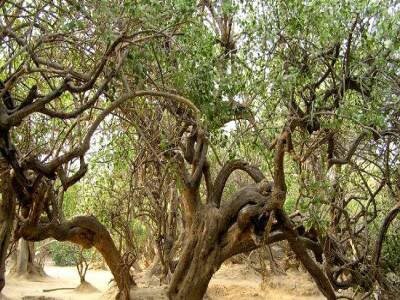
The trees that grow in this Nidhivan complex grow weirdly. Generally, the branches of trees grow upwards but here the branches of trees grow downwards and are tangled. It is believed that all the creepers of trees are Gopis.
It is believed every night Lord Krishna Visits Nidhivan and has raas lila with Gopis and Radha Rani and not only human beings, but any kind of single animal also can’t remain in the periphery of this place. The people living near the Nidhivan follow the proverb “Precaution is better than cure.”As the houses built in the vicinity of Nidhivan have access to the view of the area but no one dares to attempt to do so. Nidhivan is regarded as the most mysterious and sacred place of Vrindavan.
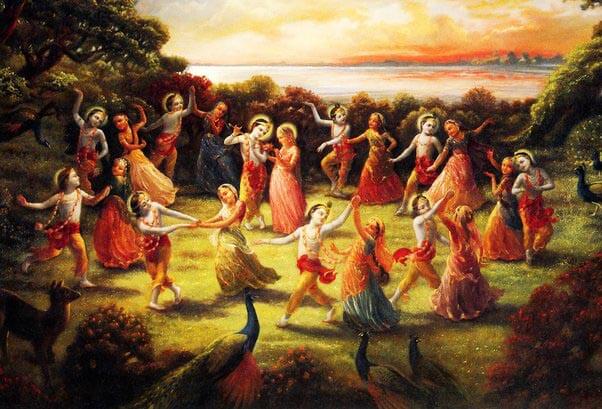
Seva Kunj
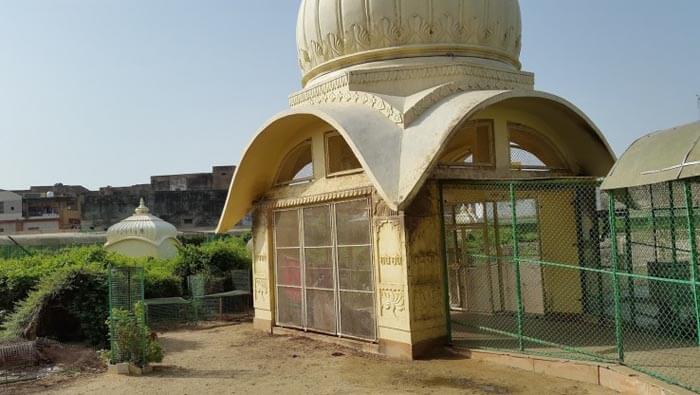
Seva Kunj was the place where Lord Krishna engaged in Ras Lila with Radha and the gopis of Vrindavan, it is near NidhiVan. The place is very different from other places in the area it is covered with trees and thick shrubs. The place which is presently called Seva Kunja was formerly called Nikunjavana and was one of twelve small forest groves of Vrindavan also called upavanas. Legend is that Lord Krishna used to do sewa to Radhaji hence the name Sewa Kunj.
How to Reach
Vrindavana is 135km south of Delhi and 55km north of Agra, just off the Delhi-Agra Road. It is 12km or a 25-minute auto-rickshaw ride from Mathura. It has a small-town atmosphere with narrow streets and not much motor traffic. There are said to be over 5,000 temples in Vrindavan. Geographically Vrindavan is placed very beautifully and it is surrounded by the Yamuna River from three sides.
Air: Agra Airport is the closest airport, which is 70 km away. The closest International airport is in Delhi (150km, 3½ hr).
Train: There is no long-distance railway station in Vrindavan. The closest major railway station is in Mathura, about 14km away or a half-hour taxi ride. There is a passenger train between Mathura and Vrindavan.
Road: Vrindavan is also well connected by road with Mathura, Agra, Jaipur, Lucknow, Delhi, Indore, and Allahabad. There are buses to Delhi that you can get at the Vrindavan bus stand or in front of the ISKCON Temple. Taking a taxi is the most convenient way to reach Vrindavan from Delhi (3½ hr, 150km) if you have a few people in your group, are a family with children, or you just want to be decently comfortable.
The best time to visit Vrindavan is in October and March when the weather is pleasant and during that time festivals like Holi, Janmashtami, Jagadguruttam Diwas Mahotsav, Guru Purnima, Diwali, etc are celebrated.
Holi and Janmashtami are the major festivals celebrated in Vrindavan. The Holi festival attracts national and international tourists to this town. Tourists can also visit nearby Barsana where the interesting tradition of Lath Mar Holi is observed. Barsana is the place where Krishna’s consort Radha was born. The place is especially interesting during the festival of Holi when the women of Barsana attack the men of nearby village Nandgaon with sticks and play the Lath Mar Holi.


